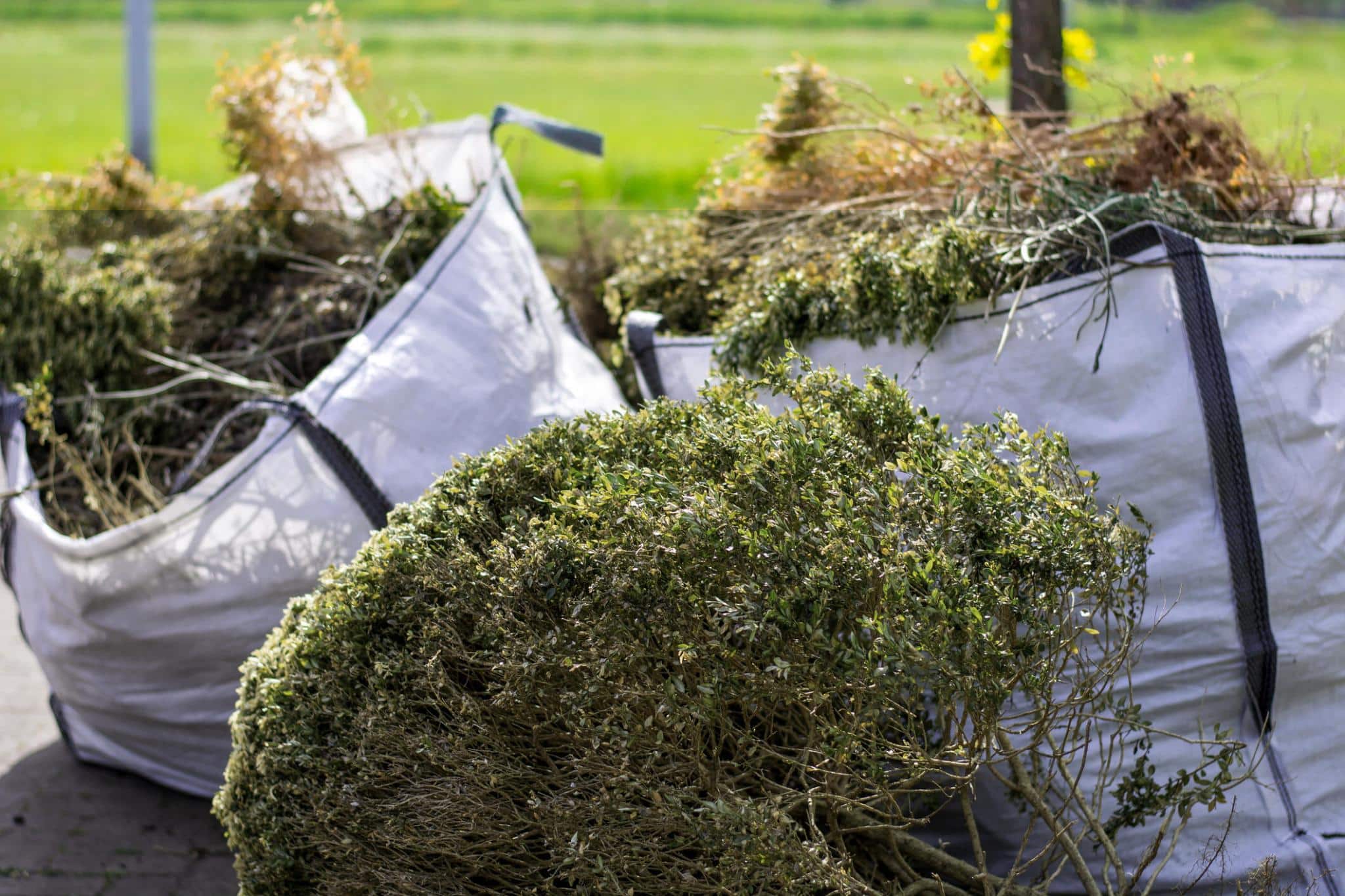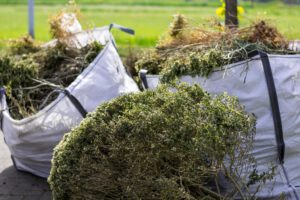Why Do You Need to Remove Shrubs?
Shrubs can be a beautiful addition to any garden or landscape, but there are times when they must be removed. You need to remove shrubs from your property for several reasons. One common reason is that they have become overgrown and take up too much space. This can be especially problematic if the shrub blocks sunlight from reaching other plants in your garden.
Additionally, you might need to remove a shrub if it is diseased or infested with pests. In these cases, removing the shrub is essential to prevent the spreading of disease or pests to other plants in your garden.
Assessing the Condition of Your Shrubs
Before you start removing a shrub, it’s crucial to evaluate its condition thoroughly. To begin, inspect the shrub’s overall health. Look for signs of illness, such as wilting leaves or black spots, which may indicate that the shrub is diseased. Additionally, pest infestations can be checked by examining the leaves for evidence of chewing or webbing, which could signal the presence of harmful insects.
Furthermore, consider the shrub’s size and root system. Larger shrubs with extensive root systems will require more effort and time to remove safely. Additionally, take note of the shrub’s location. If it’s situated near a structure or other plants, you’ll need to exercise caution during the removal process to prevent damage to surrounding areas. By following these steps, you can ensure a successful shrub removal process while minimizing potential risks and damage to your property.
Check out our comprehensive guide to learn more about shrub removal and maintenance. Our guide covers everything from assessing the condition of your shrubs to selecting the right tools for the job, ensuring that you have all the information you need to keep your garden looking its best.
Tools and Equipment Needed for Shrub Removal
Pruning Shears or Loppers
Pruning shears or loppers help trim any branches or foliage before starting the shrub removal process. This initial step can help make the shrub easier to manage and handle during the removal.
Shovel or Garden Spade
A shovel or garden spade is essential for digging around the shrub’s base. This will help loosen the root system and make removing the shrub from the ground easier.
Protective Gloves
Wearing a pair of sturdy gloves can protect your hands from thorns or sharp branches while you work on removing the shrub.
Cutting Tools
Depending on the shrub’s size and location, you may need a hand saw or chainsaw to cut through thicker branches. Choose the appropriate tool based on the shrub’s size and density.
Transportation Aids
A wheelbarrow or tarp can help transport the shrubs and debris removed from your work area, keeping your space clean and tidy throughout the removal process.
Step-by-Step Guide for Shrub Removal
Step 1: Pruning and trimming the shrub
Before you begin digging around the shrub, it’s important to prune and trim any branches or foliage. Start by removing dead or damaged branches using your pruning shears or loppers. This will make the shrub easier to handle and promote healthier growth in the future. Next, trim any overgrown branches or foliage to reduce the shrub’s size. This approach will simplify the removal process and make it more efficient. Be sure to wear your gloves during this step to protect your hands from thorns or prickly branches.
Once you have pruned and trimmed the shrub, take a step back and assess its size and shape. If further pruning is necessary, go ahead and trim accordingly. However, be cautious not to remove too much foliage, as this can stress the shrub and hinder its ability to recover after removal.
Step 2: Digging around the shrub
After pruning and trimming the shrub, it’s time to start digging around the base. Use your shovel or garden spade to create a trench around the shrub. The trench should be at least a foot away from the base of the shrub and extend down to the depth of the root system. This will loosen the soil and make it easier to remove the shrub.
As you dig, be careful not to damage nearby structures or plants. Take time and work slowly, mindful of the shrub’s root system. If you encounter any large roots, use your hand saw or chainsaw to cut through them. Once you have dug around the entire circumference of the shrub, you’re ready to move on to the next step.
Step 3: Removing the shrub from the ground
Now that you have dug around the shrub, it’s time to remove it from the ground. Start by gripping the base of the shrub firmly with both hands. Slowly and steadily, rock the shrub back and forth, using your body weight to loosen it from the soil. You may need to use your shovel or garden spade to pry the shrub away from the ground gently.
If the shrub is particularly large or stubborn, you may need to enlist the help of a friend or neighbor to assist you. Working together, you can apply more force and leverage to remove the shrub. Once the shrub is loose, carefully lift it out of the hole and place it onto your wheelbarrow or tarp for transport.
Step 4: Disposing of the shrub
Once you have removed the shrub from the ground, you must decide how to dispose of it. If the shrub is healthy and free from disease or pests, you can transplant it to another location. However, transplanting a shrub can be delicate and require additional care and attention. If you need clarification on transplanting, it’s best to consult with a professional landscaper for guidance.
If the shrub is diseased or infested with pests, it’s essential to dispose of it properly to prevent the spreading of disease or pests to other plants. Check with your local waste management facility to determine the best disposal method for your area. Some facilities may accept shrubs as part of their green waste collection, while others may require you to arrange a special pickup or drop-off.
Step 5: Cleaning up the area
After removing the shrub from the ground and disposing of it, it’s time to clean up the area. Start by filling in the hole left by the shrub with soil. Use your shovel or garden spade to pack the soil firmly and level it with the surrounding ground. This will ensure the area is ready for new plantings or other landscaping projects.
Next, gather any debris or plant material that may have fallen during removal. Use your wheelbarrow or tarp to transport the debris to your designated disposal area. Finally, thoroughly sweep the area to remove any remaining dirt or debris. This will leave your garden looking tidy and ready for the next stage of your landscaping project.
Common Challenges and How to Overcome Them
Stubborn Roots
Large or stubborn roots can be challenging to cut through. If you encounter this, use a more powerful cutting tool, such as a reciprocating or root saw. Work slowly and carefully to avoid damaging the surrounding soil and plants.
Close Proximity to Structures or Plants
When shrubs are located near structures or other plants, you must take extra care to avoid causing damage. Use a protective barrier, such as a tarp or plywood, to shield nearby plants or structures during removal.
Limited Access to the Shrub
If the shrub is in a hard-to-reach area, consider using specialized tools with longer handles for better reach. Additionally, you may need to carefully plan your approach to ensure you have enough space to work safely and effectively.
Disposal of Removed Shrub
Once you have removed the shrub, you’ll need to dispose of it. Depending on your area, this may involve arranging yard waste pickup, taking the shrub to a local disposal site, or composting the materials.
Root Regrowth
After removing a shrub, you may encounter root regrowth. To prevent this, remove as much of the root system as possible and consider using a root killer if necessary. Monitor the area over time to ensure the shrub does not regrow.
Plan for Time and Energy
Shrub removal can be time-consuming and physically demanding. Allocate enough time and take breaks as needed. If the job is too challenging to handle alone, consider asking for help.

Safety Precautions for Shrub Removal
Wear Protective Gear
Wear protective equipment, including gloves, safety goggles, and durable footwear. These items will help shield you from thorns, branches, and other hazards.
Handle Cutting Tools with Care
Exercise caution when using cutting tools such as pruning shears, loppers, hand saws, or chainsaws. Follow the manufacturer’s instructions and take your time to ensure safe and accurate cuts.
Consult the User Manual
If you need help operating a particular tool, refer to the user manual for guidance. Proper tool usage can prevent accidents and injuries.
Mind Your Surroundings
Be aware of your surroundings, and do not trip over obstacles or damage nearby plants and structures. Ensure that children and pets are kept clear of the work area.
Avoid Straining Your Body
Take care not to strain your body during the removal process. Use proper lifting techniques and take breaks as needed to avoid overexertion.
Seek Professional Help if Needed
If you are still determining your ability to remove a shrub safely, consider consulting with a professional landscaper. They can safely and efficiently complete the job with their specialized expertise and advanced equipment.
Hiring a Professional for Shrub Removal
Shrub removal can be a satisfying DIY activity, but it’s best to consult a skilled landscaper, especially with large or deeply-rooted shrubs, or if you are uncertain about the safe removal process. Professional landscapers have the expertise, experience, and specialized tools necessary for securing and effectively extracting shrubs from your property.
By engaging a professional landscaper for shrub removal, you ensure a smooth and efficient operation while safeguarding your property and saving valuable resources. Their proficiency and equipment streamline the removal process, ensuring a thorough and safe outcome. Overall, opting for professional assistance frees up your time and energy, allowing you to focus on other aspects of your landscaping project, while ensuring a seamless shrub removal process.
Professional landscaping assistance can greatly improve the quality of your outdoor space. By enlisting the help of experts, you can focus on enhancing other aspects of your landscape design, leading to a more attractive and prosperous outdoor area. This can help you achieve your desired results with ease while ensuring that your outdoor space is visually appealing.
Conclusion
Removing shrubs from your property can be necessary to maintain the health and beauty of your garden or landscape. By following these step-by-step instructions, assessing the condition of your shrubs, using the right tools and equipment, and taking safety precautions, you can successfully remove shrubs from your property.
However, if you need more clarification about your ability to remove or deal with a particularly challenging shrub safely, it’s best to consult a professional landscaper. They can provide the expertise and assistance you need to ensure a successful shrub removal.
For all your lawn care and maintenance needs, contact All Seasons Landcare. Our professional and reliable lawn maintenance services in Arlington, TX include shrub removal, landscaping, and more. To learn more about our services or book an appointment, please visit our website.
Frequently Asked Questions
Can I transplant a shrub instead of removing it?
If the shrub is healthy and free from disease or pests, you can transplant it to another location. However, remember that transplanting can be a delicate process and may require additional care and attention. Seek advice from an expert landscaper for proper guidance.
How do I dispose of a diseased shrub?
Proper disposal of a diseased shrub prevents the spread of disease or pests to other plants. Check with your local waste management facility for the best disposal method in your area.
What tools do I need for shrub removal?
Essential tools for shrub removal include:
- pruning shears or loppers,
- a shovel or garden spade,
- gloves, and
- a wheelbarrow or tarp for transport.
Depending on the size and location of the shrub, you may also need a hand saw or chainsaw.
How do I safely remove a shrub?
Prioritize safety by wearing protective gear, using caution with cutting tools, and being mindful of your surroundings. Consult a professional landscaper if you need help removing a shrub safely.
When should I hire a professional for shrub removal?
If you’re dealing with a large or heavily rooted shrub or are unsure how to remove it safely, hiring a professional landscaper is best. They have the knowledge, experience, and equipment to remove shrubs safely and efficiently.








